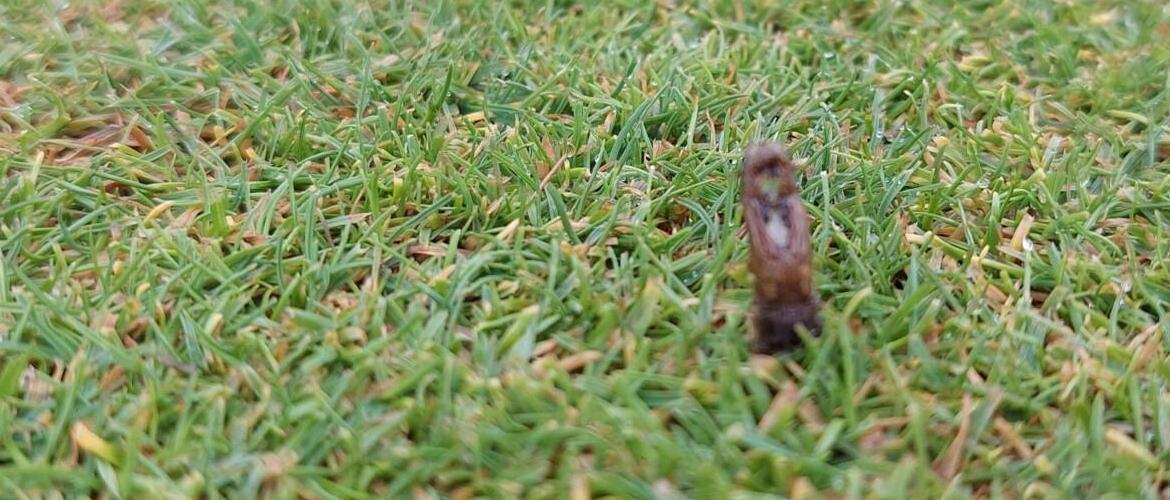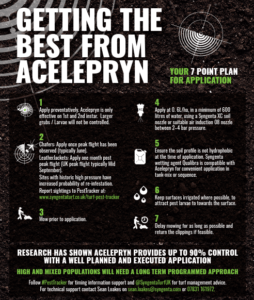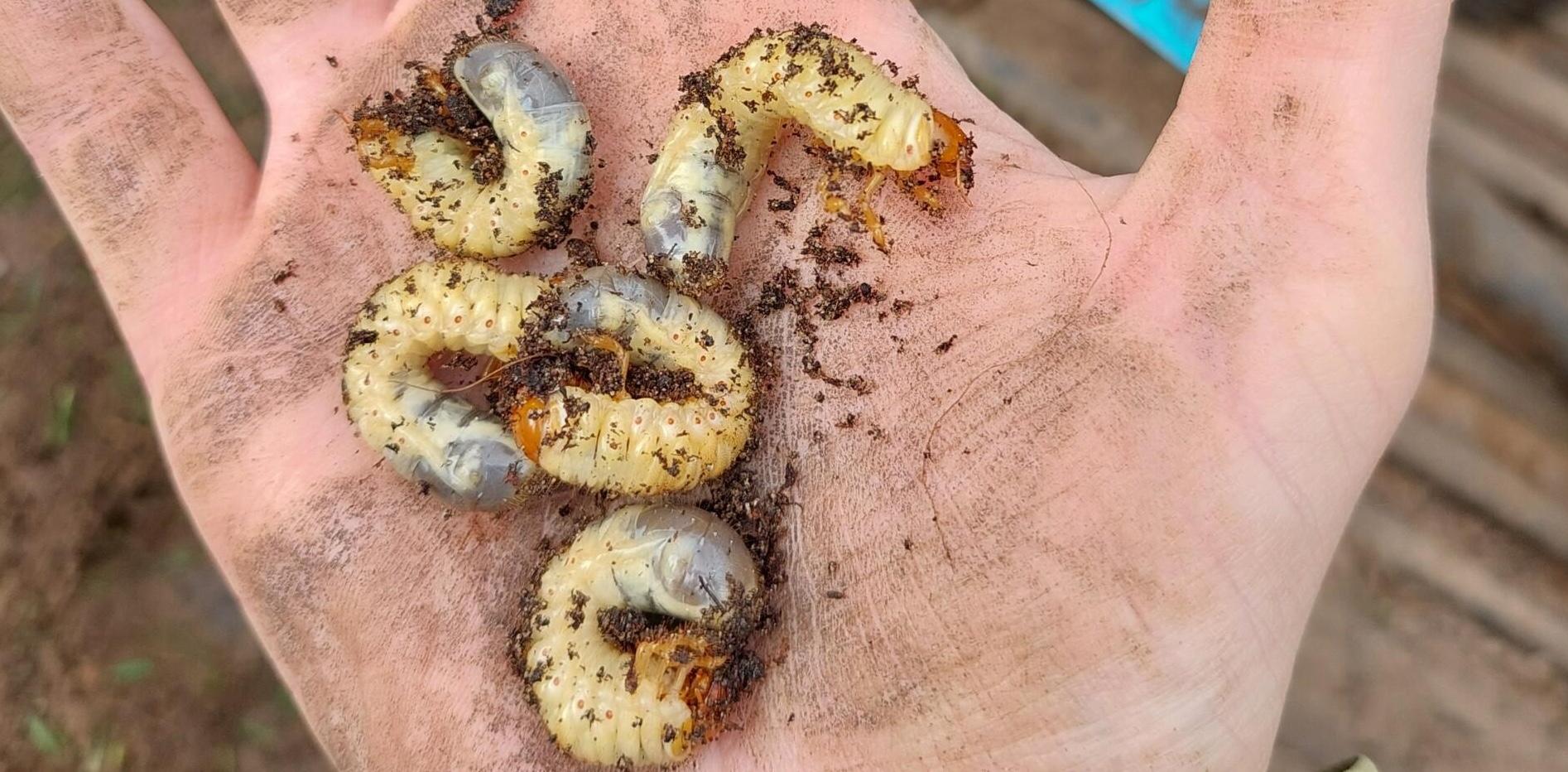As with any product we purchase we want to get the best out of it, all of the points in the 7 point plan are based on research and development and user trials conducted by Syngenta. We’re always updating our advice for getting Turf Managers the best from products.
Read part one of the ‘Getting Best from your Acelepryn Application‘.
Point 4.

Always good practice to check and calibrate the sprayer before use.
We want to be targeting the soil so course droplets are the best here for pushing the product down through the sward. We’d recommend the Syngenta XC soil nozzle (white ones), but a suitable air induction 08 nozzle will do the job. We don’t want to leave the product on the leaf, so the set up here is designed to cause run off and get the active moving down to where we want it.
0.6 Litres Acelepryn per hectare, mixed in with 600 – 1000 Litres of water (I’d recommend aiming for that higher water volume where practical, generally higher water volumes are a better choice for products we want to target the soil).
Point 5.

Research has shown that Qualibra is perfectly compatible with Acelepryn as a tank mix buddy. Trials have also shown that its not essential to include a surfactant (wetting agent or penetrant) in the tank with Acelepryn. But as a convenience it can make sense to include if the sprayer is going out.
The important thing is having surfactants down in the lead up to an Acelepryn application. That’s going to help deal with any hydrophobic (dry patch) areas so we get good even coverage and any Leatherjackets which have hatched from eggs are still close to the surface (dry conditions will drive them deeper in the soil profile).
Point 6.

This feeds in to what we mentioned above, we want to keep those surfaces irrigated to keep the young Leatherjackets close to the surface where the product is most concentrated.
Point 7.

Even if we get the prefect application done, right (white) nozzles, water volume and spray window we will still leave some product on the leaf unfortunately. So delaying mowing/returning clippings post application will give time for the last of the product to migrate down off the plant into the soil, giving us the highest active concentration possible where we want to target those larvae!
Good luck this year and fingers crossed for some good spray days, as always feedback is always welcome so feel free to get in touch!
It’s been a tough year for Cranefly this year with the warm dry weather we’ve seen lower numbers reported on pest tracker, but I think the saying “make hay while the sun shines” fits well.
We have a chance to really push down those Cranefly population levels off the back of a tough year for them, we don’t know who next year will favor, them or us….
Don’t forget to read part one of the ‘Getting Best from your Acelepryn Application‘.





